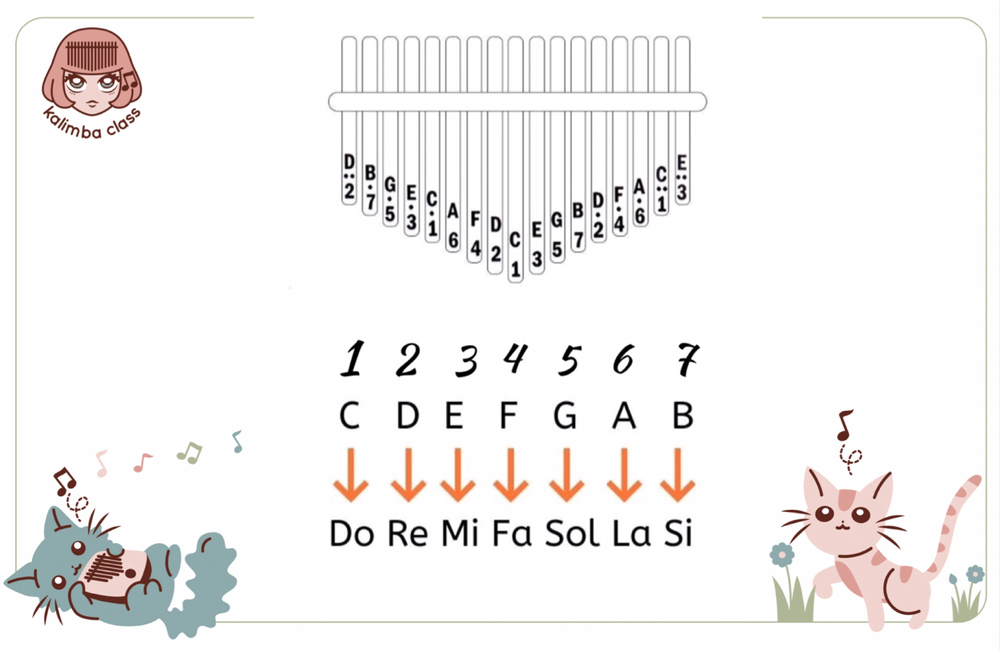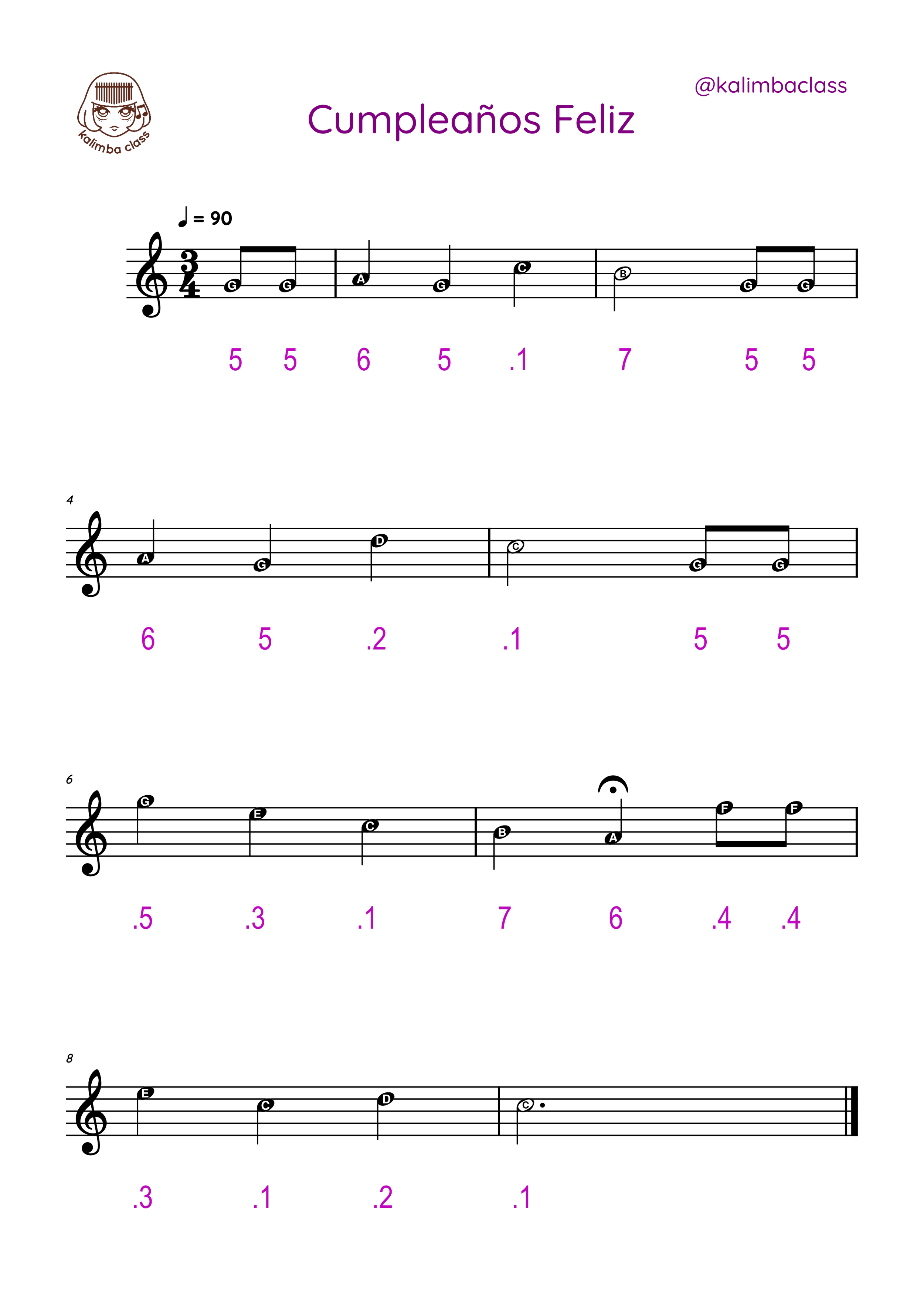How to play the kalimba
Congratulations. If you are reading this, you probably have your first kalimba. I say your first because after entering this world you will want to have more.
To start playing it is important to first understand what is written on the keys of your kalimba. The 17-note kalimba is the Asian kalimba that is quite modern, it is from around the 1950s and its design was inspired by the original African kalimba. Although it looks similar to that instrument, the arrangement and tuning of the notes is very different.
Your Asian kalimba will have 17 notes arranged in ascending order on the musical scale, 1 is equivalent to the piano central C (Do). From there the notes go upwards on the scale until a :3 / E (Mi).
The numbers:
The numbers 1 to 7 correspond to Jianpu, which is the Asian musical nomenclature for musical notes. The dots above each number specify the "register" or octave, the more dots above the note number the higher the octave. In some kalimbas with more notes you might also find dots below the numbers, which means they are in lower octaves.
The letters:
The letters –also present on many kalimbas– are the the American / Anglo-Saxon nomenclature commonly used in the West. I believe it is easier to learn to play kalimba based on the numbers since it is more natural to think of musical notes this way.
This is your kalimba
Here you can see the numbers with their dots (Jianpu) and letters (Anglo-Saxon nomenclature).
Jianpu logic makes it easy to learn to play the kalimba. You start with the number 1 as C and go up to number 7 as B (Si). Thus you have all the musical notes and they are repeated as they go up in octaves (or "register") as indicated by the dots.
Now that you understand what those symbols on each key mean, let's learn how to read those numbers and letters to play the kalimba. The Happy Birthday song lends itself as a great starting point.
Play a tune on your kalimba:
In the first score on this page you can see the numbers under each note and on the note heads you can see the corresponding letter in American key.
Numbers are read the same as we read words, to the right horizontally. When a number has a dot we play the note that corresponds to the key of the number with the dot above it.
Play a melody with accompaniment on your kalimba
If you want to take the kalimba a step further after having learned this melody, you can advance by reading the following sheet music, here you will see that there are vertical numbers in black below the purple ones that correspond to the melody, those are the accompaniments.
The accompaniments are vertical numbers and these are read from bottom to top, if you read in that order they will be easier to play, since the kalimba, having V-shaped keys, makes it possible to play more than one note at a time. This can only be done upwards, so if you read from bottom to top it will make more sense and be faster and easier to play.
In other words, you continue reading the purple melody horizontally and when there are accompaniments –the black numbers– you read them vertically from bottom to top.
You can play them at the same time, which is what we call chords, or one after the other, which we call arpeggios.
Let's read the first accompaniment, in this case a chord: 1-3-6, you can play the 1-3 with your right thumb simultaneously and the 6 with your left hand.
In the second accompaniment, 2-5-7, if you look at those three notes on the kalimba you can see they are in a row, it is an arpeggio so you will play those three notes one by one with the right thumb.
In both cases the last note is the melody in purple. The notes which are part of the melody are the most important. If they are not emphasized the song will lose its identity. This is why I suggest learning the melody first and the accompaniment afterwards. Don't forget that the melody is important, think if it as flowing horizontally, just like when you speak a phrase.


